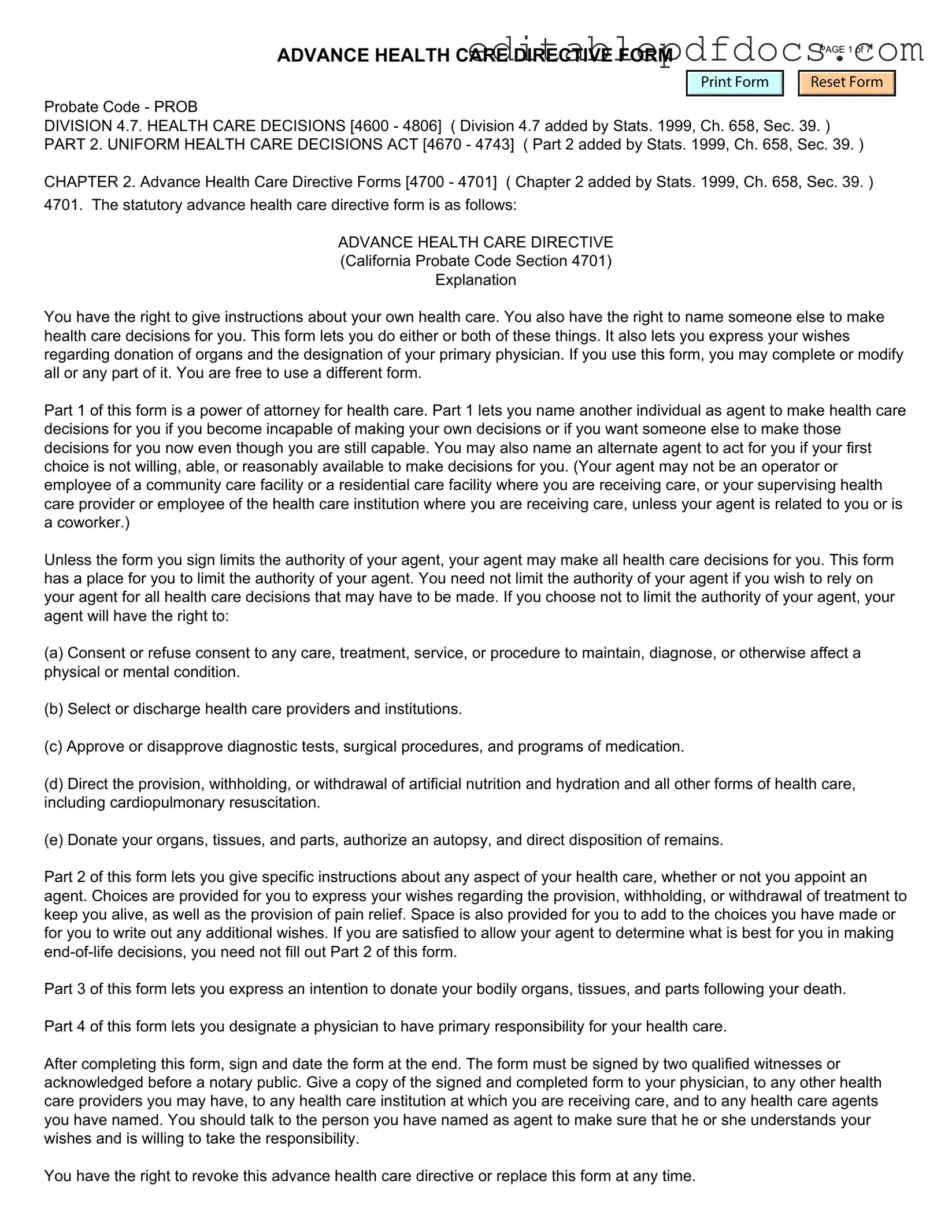Filling out the California Advanced Health Care Directive form can be a crucial step in ensuring that one's healthcare preferences are respected. However, many individuals make common mistakes that can lead to confusion or complications later on. Understanding these pitfalls can help ensure that the form is completed accurately.
One frequent mistake is failing to clearly designate a healthcare agent. This person is responsible for making medical decisions on behalf of the individual if they become unable to do so. Without a clear designation, healthcare providers may not know whom to consult, which can lead to delays in care.
Another common error is neglecting to discuss healthcare preferences with the chosen agent. It is important for individuals to communicate their wishes regarding medical treatment, end-of-life care, and other preferences. Without this discussion, the agent may not be equipped to make decisions that align with the individual’s values and desires.
Some people also overlook the importance of signing and dating the form. A signature is necessary for the document to be legally binding. If the form is not signed or dated, it may be considered invalid, rendering the individual’s wishes unenforceable.
Additionally, individuals sometimes forget to have witnesses sign the document. California law requires that the Advanced Health Care Directive be witnessed by at least one person who is not related to the individual and who does not stand to inherit from them. This step is crucial for the validity of the directive.
Another mistake involves using outdated versions of the form. Laws and regulations can change, so it is essential to use the most current version of the California Advanced Health Care Directive. Using an outdated form may lead to complications or misunderstandings regarding the individual's wishes.
Lastly, some individuals may not review or update their directive regularly. Life circumstances can change, and preferences may evolve over time. It is advisable to revisit the document periodically to ensure it still reflects current wishes and to make any necessary adjustments.
